Wildlife photography tips for beginners
Wildlife photography isn’t for the faint of heart. It’s a style of photography that requires patience, a tough exterior, an ability to act fast, and ideally, love and appreciation for nature.
When wildlife photography techniques are implemented properly, all of the hard work that goes into capturing a wildlife photo becomes more than worth it.
It just takes patience to learn wildlife photography techniques. And so, if you’re someone who wants to improve their wildlife photos, you’ve come to the right place. We’ll be going over everything that aspiring wildlife photographers should know prior to setting up their business, including what equipment to invest in, the skills required, and all the camera settings that will help with achieving the best image possible.
Let’s discuss.
14-day free trial. No credit card required.
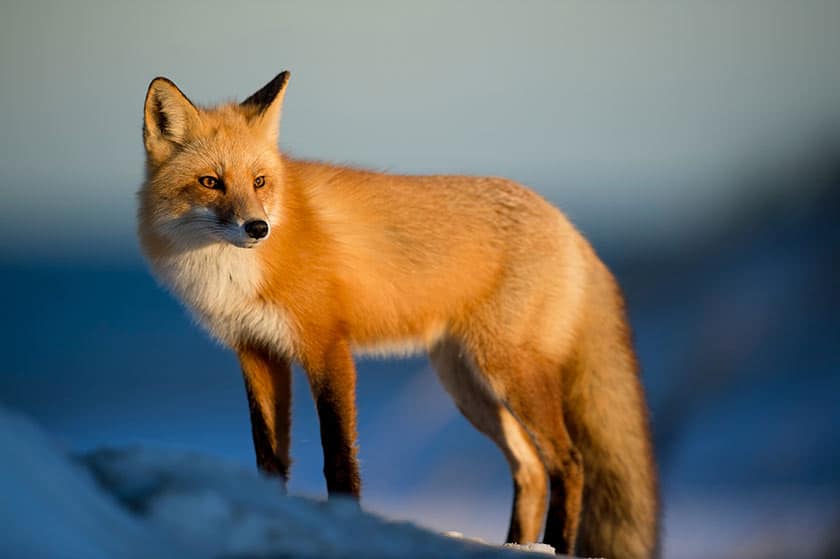
10 Wildlife photography tips.
If you’re ready to get your career as a wildlife photographer started there are some key essential tips you need to implement. Doing so will not only provide you with better images, but you’ll also likely find that you feel more confident and secure as a wildlife photographer.
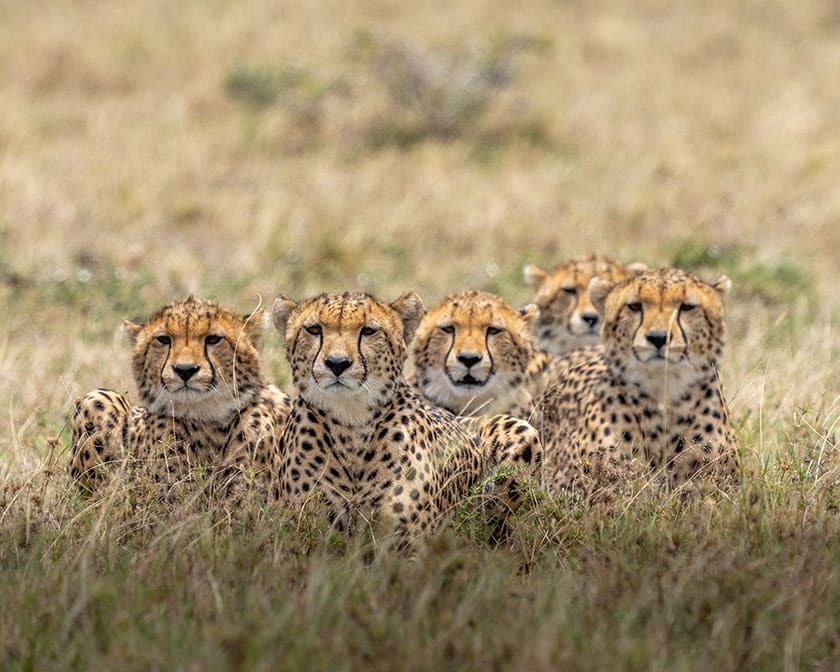
1. Pick the best time of day and lighting.
Wildlife photography is shot almost exclusively outdoors. Because of this, the quality and mood of your images are very dependent on the time of day and weather conditions.
For instance, shooting on a sunny day in the middle of the day will present some lighting challenges like potentially overexposed images or hard light and shadows. Alternatively, shooting at twilight might not provide enough light to get a sharp image of the wildlife. Having said that, in some instances, you might want to achieve a moody aesthetic for your image. Golden hour or magic hour tends to be a preferred time for many photographers, but regardless, having a plan going into your photoshoot will help you determine which time of day is best.
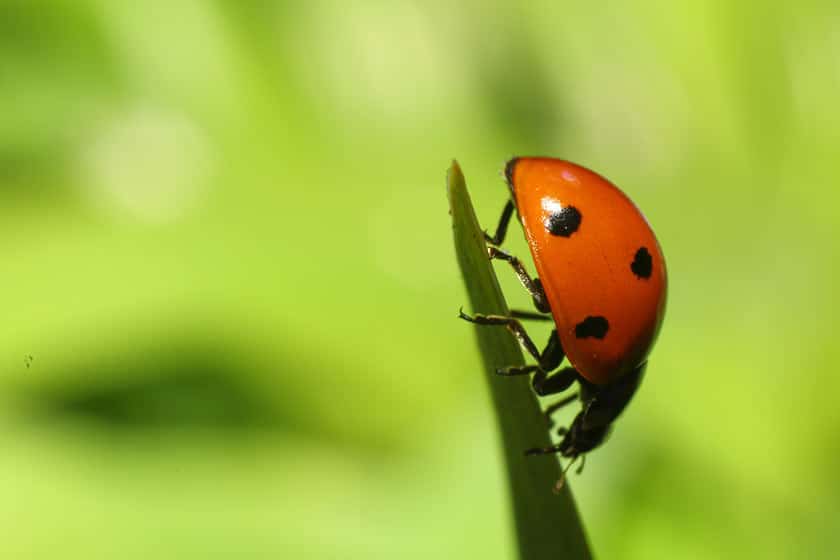
2. Get the composition right.
As you gain more experience, you’ll likely feel more confident with wildlife photography composition, but one of the most important composition techniques we like to remind aspiring photographers of is the rule of thirds.
To put it simply, the rule of thirds will ensure your subject is not directly in the middle of the image, but is instead in the left or right third of the image, leaving the other two-thirds more open.
That being said, there are no specific rules to follow. Let yourself experiment with different types of composition and break away from some of the traditional practices.
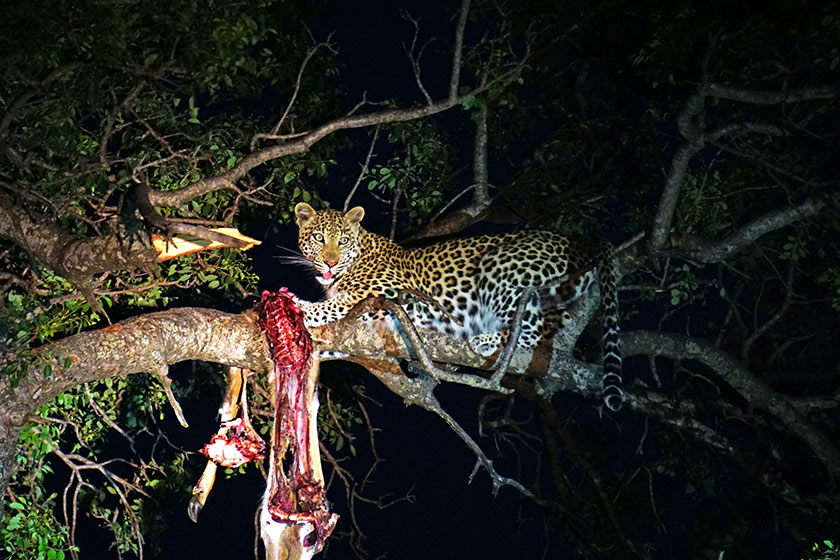
3. Know how to use a flash.
Using a flash in wildlife photography can be controversial because of the chance that the bright light disturbs the natural wildlife in the area. At the same time, though, a flash can be necessary when trying to bring life to a dull scene. It can also give you the freedom to create some really dynamic wildlife images.
For instance, you could use a fill flash as a great alternative that selectively brightens the subject. You could also use flash to backlight or sidelight your subject to make your images more striking.
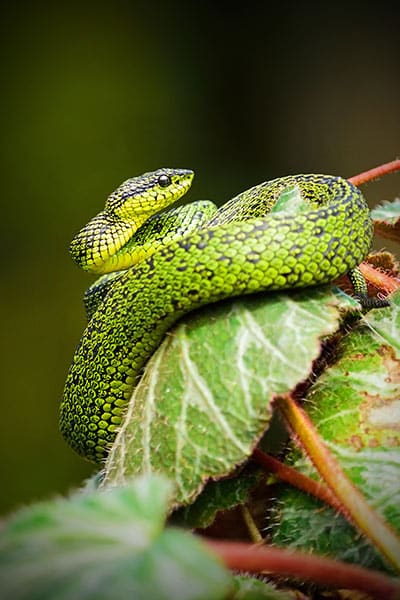
4. Understand your subject.
You might be lucky enough to snap a winning shot that wasn’t carefully planned, but in general, with wildlife photography, photographers become intimately familiar with their subject. This is especially true when photographing animals.
Remember, animals can be unpredictable in terms of their movement and behaviors. The more familiar you are, the more likely it is that you’ll be able to anticipate the scene prior to it happening.
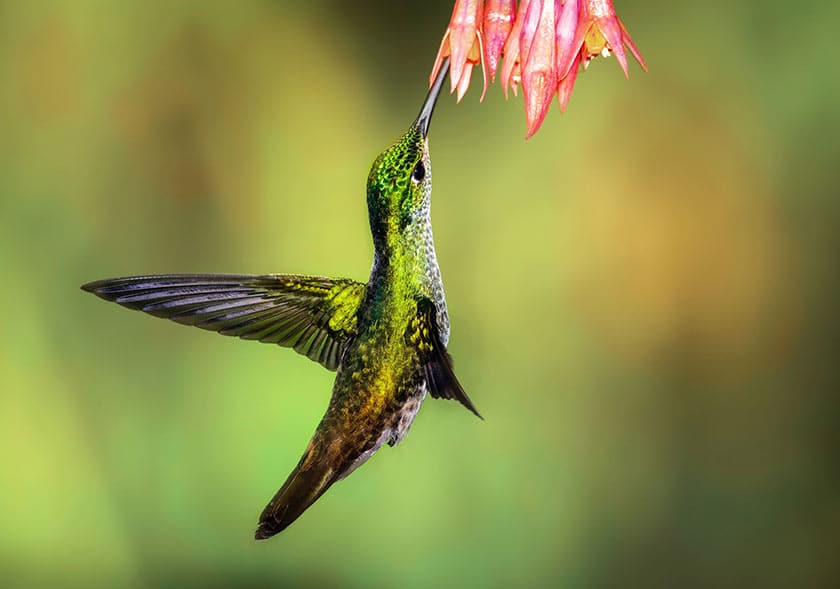
5. Get the right equipment.
Wildlife photography requires you to be out in the wilderness, and that means you need to have equipment that can work in a variety of conditions (i.e. weatherproofing, a gear bag that can carry large loads of equipment during a hike, etc.)
In addition, if you want to capture quick-moving objects like animals, you will need to have a camera and a lens that have the capability to handle high ISO settings and fast shutter speeds to minimize the amount of noise and blur in the images. We’ll go over some more specific equipment recommendations in the next section.
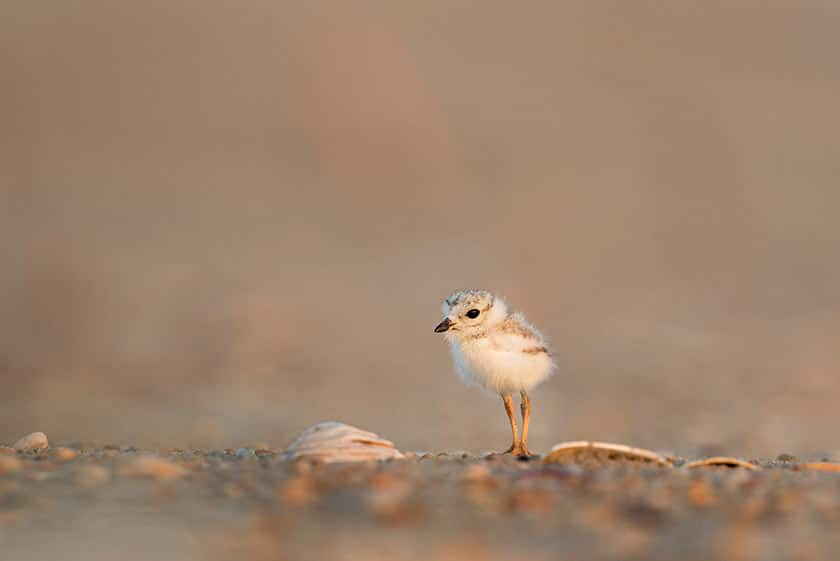
6. Be patient.
Wildlife photography takes patience, and a whole lot of it. When you’re working with wildlife there is very little that you’re in control of. You can’t pose or direct your subjects, your subject to the weather conditions and there are so many other factors that come into play. Be ready to put in time waiting for the right moment to present itself. When you do come across a photo-worthy scene you might be tempted to get in there and start shooting right away. But remember, the sound of the shutter can be quite loud when you’re out in the wilderness. More often than not, this will cause the animals to scatter, which means you could lose your scene before you even had the chance to set it up. Use a silent shutter mode if your camera has that capability. Be patient and you’ll be rewarded.
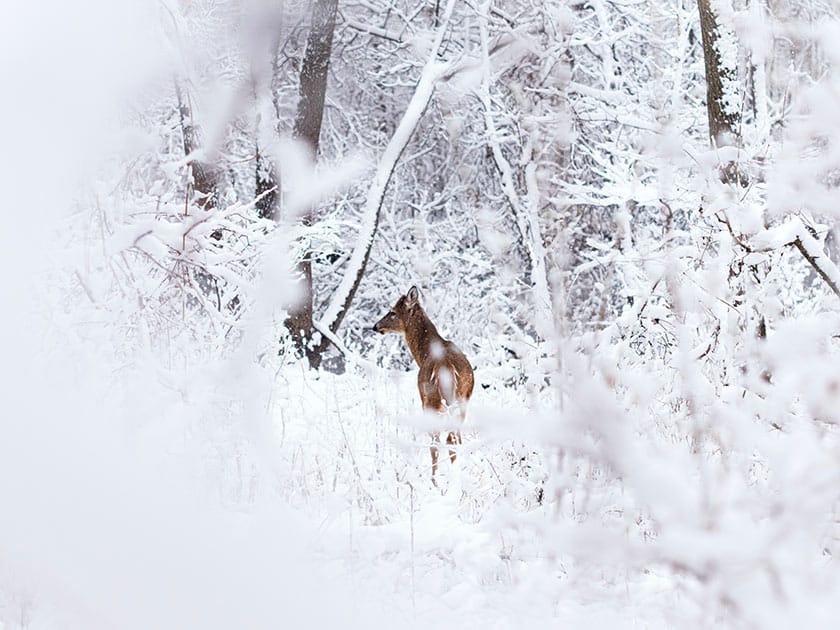
7. Anticipate the unexpected.
When shooting wildlife, you should always expect things not to go as planned. Whether it be poor weather conditions, animals in hiding, or hiking conditions that prevent you from reaching your shoot location, you need to have a backup plan ready to go. Alternatively, simply accepting that it might take longer than anticipated to get your shot is wise.
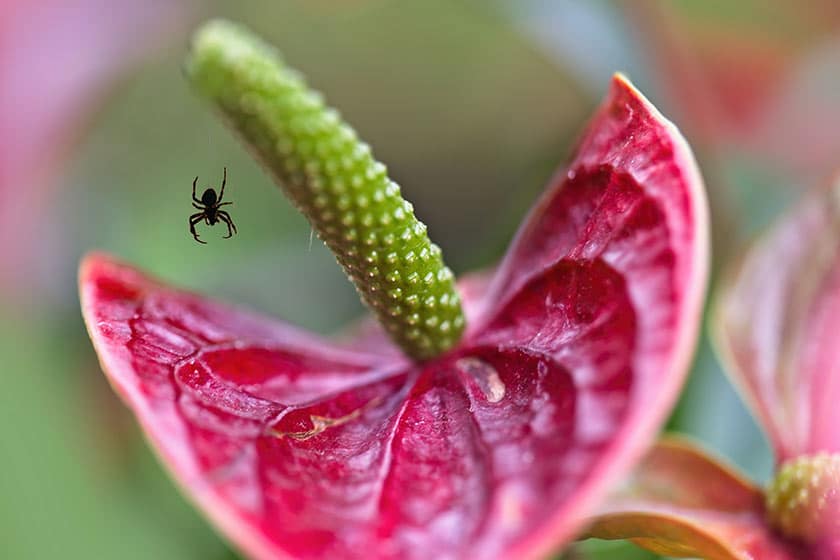
8. Know your camera settings.
Because wildlife photography can be so unpredictable, knowing your settings can be extremely beneficial for wildlife photographers. For instance, if you’ve been waiting all day for a pack of lions to show up, you need to be ready to shoot when the opportunity finally does present itself. Consider then, that as soon as the lions arrive the clouds break and the sun is streaming down. You’ll need to quickly change your exposure settings to get the best shot of the pride before they move along.
In general, a faster shutter speed will help freeze the motion of the animals. In addition, aperture priority might help you. And lastly, a mid-range ISO is generally best for wildlife imagery.
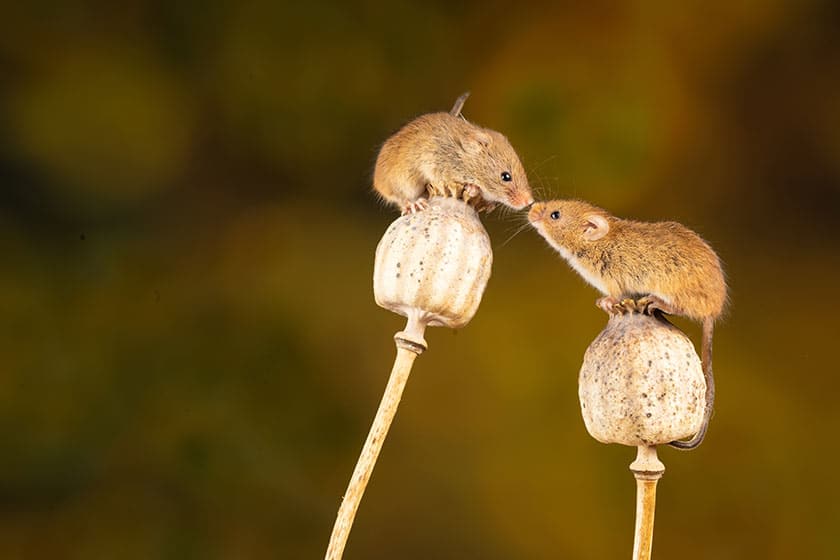
9. Take multiple shots.
Never assume that you’ve captured your perfect shot. With wildlife photography, because of the unpredictability, you never know what you’re going to get. Put your camera down for a moment and there’s a chance you’ll miss a winning shot. Instead, we recommend taking short burst images.
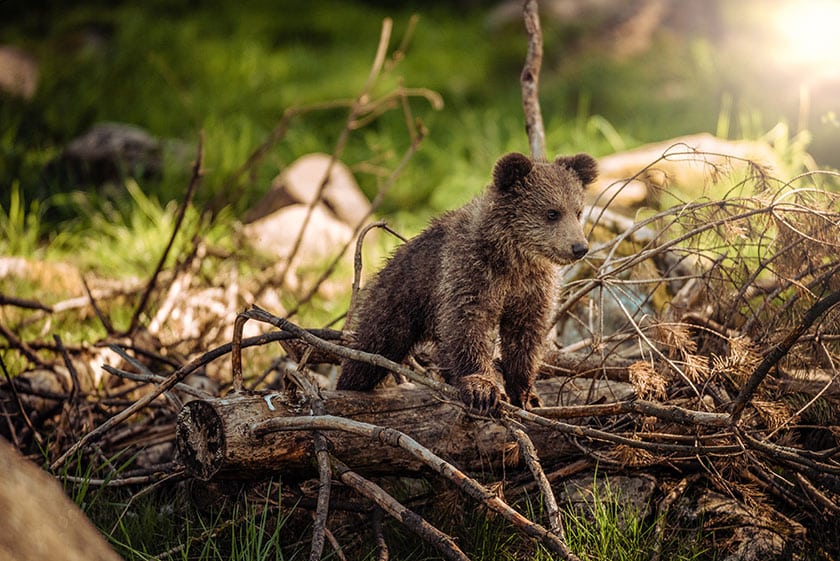
10. Respect the wildlife.
And lastly, as a wildlife photographer, it is extremely important that you respect the wildlife. In other words, we urge you to be mindful of how your presence impacts the wildlife around you. Some general rules of thumb include observing from a distance, never feeding the animals, storing garbage securely, and avoiding wildlife during sensitive times (i.e. mating, nesting, or when with young animals).
Must-have wildlife photography accessories.
We’re going to get into more detail about the photography equipment you’ll require later on, but for now, we want to remind aspiring wildlife photographers about the importance of stocking up on wildlife photography accessories that go beyond just camera accessories. Trust us, when you’re out in the wilderness with these items, you’re going to thank us.
Binoculars.
When you’re out in the wild, searching for that perfect scene, it’s highly unlikely that you’re just going to stumble across it. In fact, if you’re shooting pictures of animals, you likely won’t want to, or be able to get too close. This is where having quality binoculars that allow you to zoom in on scenes is helpful.
Backpack.
Every aspiring photographer probably already knows they need a quality camera bag, but as a wildlife photographer, you’ll want to invest in a backpack style camera bag. Remember, you will likely be hiking to get to the scene of your photoshoot. In addition, because the days can be so long and remote, you will likely be carrying more than just camera equipment, change of clothes, food, water, etc. Investing in a backpack that accommodates these needs is a must.
Waterproof jacket.
Because you are likely going to be outdoors shooting, investing in proper clothing attire is essential. In particular, there is nothing worse — or more dangerous — than being out in the wilderness wet and cold. Because you don’t have any control over the weather during your shoots, always carry a high-quality waterproof jacket.
Hiking boots.
Another piece of attire that you’re going to want to invest in as a wildlife photographer is a pair of hiking boots. Even if you spend a lot of time sitting and waiting for wildlife to show up, you will still likely be hiking to get to your scene. Having boots that can withstand all different types of terrain and weather is worth the investment.
Weather-appropriate clothing.
This is going to vary depending on climate and terrain, so rather than list out every possible option, we’ll instead simply urge you to ensure that you are dressed appropriately for the weather. In some cases, this might mean moisture-wicking items and lightweight clothing in hot climates. In other instances, it might mean investing in a pair of insulated gloves to preserve your hands. Either way, being over prepared with your clothing choices is never a bad idea.
Beanbag.
If you’re not familiar with the beanbag trick this might seem like a funny suggestion but once you use it, you’ll never go back. Essentially, the bean bag acts as a tripod replacement when you’re in a hurry. For instance, if you’re driving in your car and you happen to stumble across photo-worthy wildlife, pull out your beanbag, place it on the hood of your car, and use it to help stabilize your camera as you shoot.
Fanny pack.
A fanny pack is one of our favorite options for quick-access storage. While you can also use ziplock bags or any other type of small bag that you put in your backpack, a fanny pack is the best option for ensuring everything you need quick access to is right on you at all times. You can keep things like memory cards, batteries, and your phone in your fanny pack so you don’t have to rummage through your backpack and potentially startle the wildlife.
Rain hoods.
As a photographer, your hands are going to be pretty busy when you’re shooting, meaning you’re not going to be able to hold an umbrella if it’s raining. Plus, even when you’re not shooting, your hands should always be available in case something unexpected happens and you want to catch it. On top of that, don’t forget that you want to keep your camera equipment protected from the rain. Rain hoods and rain sleeves can help.
Headlamp.
If you want to shoot at twilight, there’s a chance you might have to start hiking into your location prior to the sun coming up. In this case, having a headlamp can be extremely valuable. The same goes for if you shoot at golden hour and the sun starts going down before you make it back to your car.
Photography mat.
Lastly, while you might want to avoid carrying this during your hike, once you start shooting, it can come in handy. Essentially a padded mat allows you to get down to ground level comfortably and cleanly. While this wildlife photography accessory might not be absolutely essential, it is certainly convenient.
Understanding ethical wildlife photography.
As an ethical wildlife photographer, it is your job to leave the wildlife undisturbed as if you were never there. This means leaving animals alone, never removing any plant or wildlife life, and leaving no trace of your presence (i.e. garbage).
Essentially, your role as a wildlife photographer should never risk an animal’s life or disturb an ecosystem’s health.
If you believe in the importance of all of these ideas, here are some general guidelines we recommend:
- Never feed the wildlife: Whether because you think an animal is cute, or you’re trying to attract the animal for your own needs, under no circumstances is it ever appropriate to feed wildlife.
- Respect trail markings: While in some instances you might be able to go a bit off the trail, when trails are specifically marked, there is often a reason for this. Obey signage at all times.
- Avoid setting up a scene: You might think your photo looks better when you add some carefully placed “props”, but under no circumstances should you ever move wildlife around to suit your photographic needs.
- Don’t introduce new wildlife to the scene: It might seem harmless to bring in a couple of sticks and some rocks from home to help set up your scene, but what you might not realize is that you could introduce invasive plants to the area, which should always be avoided.
- Don’t get too close to the animals: You might be tempted to get a close shot, but not only does this disturb the animals, but it can also potentially be dangerous for you.
Bottom line: Anything that isn’t natural to the scene should always be avoided in order to help preserve the natural habitat. As an ethical wildlife photographer, this should be one of your top priorities.
Best camera for a wildlife photography beginner.
There is no one singular best camera for a wildlife photographer, but if you’re in the market for a new camera and you feel called to the wildlife photography niche, there are a couple of features you should look out for when making your selection.
We suggest beginner wildlife photographers find a camera that has:
- A fast burst mode: Because wildlife photography can be so unpredictable and photo-worthy moments can happen in a fraction of a second, you want to be able to capture as many quality images as possible without having to constantly press the shutter.
- Quality autofocus: Again, your subjects might be moving, and they might be moving quite quickly. Having a camera that can focus quickly and efficiently is crucial in wildlife photography. There are also some cameras, like the Canon EOS R3, that have animal recognition and eye detect autofocus for animals.
- Compatible with a telephoto lens: As a wildlife photographer, it’s unlikely that you’ll be getting up close and personal with your subject. Having a camera that is capable of zooming in at extreme distances is worth considering. Consider something like a 100-400mm lens.
- Full frame camera: While you technically can use a different camera, a full-frame camera tends to be best because of its noise and dynamic range capabilities.
- DSLR cameras tend to be the most popular in wildlife photography: However, technology for mirrorless cameras has improved and they have become a lot more popular. Mirrorless cameras are a lot lighter which is a big benefit to making the switch.
Wildlife photography skills.
There are plenty of skills that all photographers should have—an eye for detail, a creative edge, and an understanding of the technical workings of a camera just to name a few. Having said that, as a wildlife photographer, there are some specific skills you’re going to want to acquire in order to progress in your career.
- Survival skills: No, you don’t have to be a total outdoor fanatic, but if you’re going to spend your career outdoors photographing wildlife, you should be familiar with basic survival skills like cooking over a fire, building a shelter, finding drinkable water, foraging / fishing, etc.
- Animal knowledge: Understanding mating patterns, signs of aggression, and typical animal behaviors can help you immensely when photographing animals. It will not only help you find the animals, but it will also keep you safe and confident when in their proximity.
- Map reading: Sure, many of us have smartphones that will tell us how to get from point A to point B, but when you’re out in the wilderness, there’s a good chance that you’re not going to be able to rely on your phone. Knowing how to read a map could save you.
- Extreme patience: We’ve already mentioned patience, but it bears repeating because it is so crucial to your success as a wildlife photographer. Remember, you don’t have control over nature. Some days you might not get any shots. This can be discouraging, but when you’re patient, eventually, that patience pays off.
- Quick on your feet/good under stress: You never know what is going to happen in wildlife photography. Whether it be a chance encounter with a wild animal, an injury, or a problem with navigation, you need to be able to think under pressure and come up with a solution.
- Strong researcher: Unless you’re an absolute expert on wildlife and nature, there’s a good chance that you’ll need to do some research. For instance, researching a new shoot location, the local wildlife, and any rules that govern that area are all important topics to research.
- Willingness to travel: As a wildlife photographer, it’s unlikely that you’ll be able to capture a diverse range of photos by simply sticking to your backyard. If you’re not willing to travel to get the perfect shot, this might not be the field for you.
- Independent worker: While you could have a companion with you during shoot times, in general, wildlife photography requires you to spend a great deal of time on your own. In fact, you could be out in the middle of nowhere alone, which is not ideal for someone who prefers to be around people.
- Organizational skills: Wildlife photographers don’t simply go out and start photographing wildlife. They develop a carefully thought out plan that they then put into motion. A plan like this requires the photographer to be an organized individual who can think ahead and be well-prepared before embarking on a project.
- Photographic skills. It goes without saying that you need to develop skills as a photographer if you want to succeed, but in particular, we recommend spending some time mastering the photography skills that are most often used in wildlife photography. For instance, macro photography and experience with landscape photography can be helpful.
Wildlife photography at home.
When you’re first getting into wildlife photography, it can feel slightly intimidating to think about traveling great distances to get that winning shot.
Because of this, it is often recommended that you work up to these more advanced levels.
For instance, if you have absolutely no experience with wildlife photography, you can first start out by photographing plants and animals that you’ll find right in your backyard. The practicality of this will vary greatly depending on where you live (i.e. if you live in an apartment in New York City, this might be difficult), but in general, just getting outside and photographing what is available to you is a great place to start.
From there, you can work yourself up to more advanced projects. For instance, maybe you go on a nature walk, or perhaps you travel a couple of hours to go camping. Once you have more experience and feel confident that you have something unique to offer as a wildlife photographer, you could start jumping on planes and traveling great distances for your work.
Camera settings for wildlife photography.
As with any style of photography, you don’t want to just go out and start shooting without any insight into what camera settings will serve you best. Consider these camera settings for wildlife photography and watch as your work improves
ISO.
ISO is going to change how bright or dark your photo is. Having said that, you don’t want to rely on ISO strictly for controlling your light. When you don’t have a lot of light, simply turning up the ISO can result in a very noisy or grainy image, which we definitely want to avoid.
The best rule of thumb: The best ISO for wildlife photography is a mid-range ISO, which tends to be somewhere between 400 and 800. Once you start playing with your shutter speed and aperture, you might find that you’re able to let more light into the camera, which will allow you to lower the ISO.
Also, keep in mind that wildlife photography often requires you to photograph animals that move fast, which might mean you require a fast shutter speed. In this case, you may need to bump up the ISO, but in general, lower is better, and adjusting the shutter speed and aperture is preferred.
Shutter speed.
Fast shutter speeds are the preference for wildlife photography since animals are in the shot and could often be moving. In general, we would say a shutter speed of at least 1/250 or higher is ideal for wildlife photography. When capturing fast movements such as bird wings or running animals, you’ll often need to push that up to 1/1000 or higher, depending on the wildlife.
Remember, the faster the shutter speed, the less light coming into the camera, meaning your photo could end up underexposed. In some cases, you won’t be able to avoid a fast shutter speed (i.e. an animal is moving or there’s lots of activity in the scene), but practice and use your best judgment based on your needs for the specific scene.
Aperture.
The aperture also impacts how much light comes into your camera. Except this time, rather than the speed impacting the light, it’s the size of the opening in your lens.
In general, we find that many wildlife photographers choose to put their cameras in aperture priority mode. This means that you select the aperture and then your camera automatically determines the shutter speed depending on how much light is in the scene. This generally controls for an underexposed image, provided you are in a well-lit environment. This setting is not as reliable when shooting in lower light, as it may use a shutter speed that is not fast enough to freeze your subject’s motion. Practicing and getting familiar with your camera in a variety of lighting conditions is still the best path to achieving the image you want to create.
The general rule behind picking the best aperture for wildlife photography is to consider much of the image you want in focus compared to the background. If you want your subject to be separated from the rest of the background, choose a wide aperture like f/2.8. If you want more depth of field, choose an aperture like f/11 or f/16. Choosing your aperture is really a style choice.
Build an online portfolio website you love.
Put your wildlife photography in the spotlight.